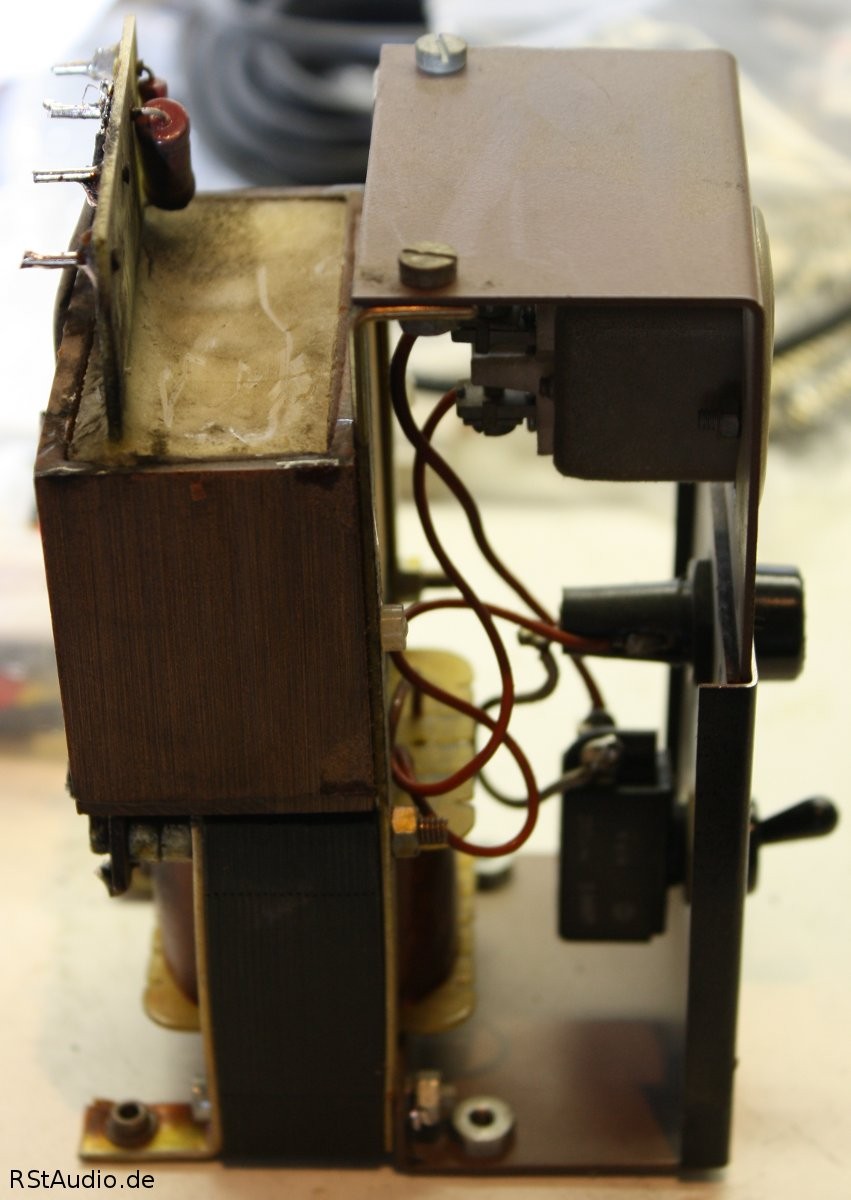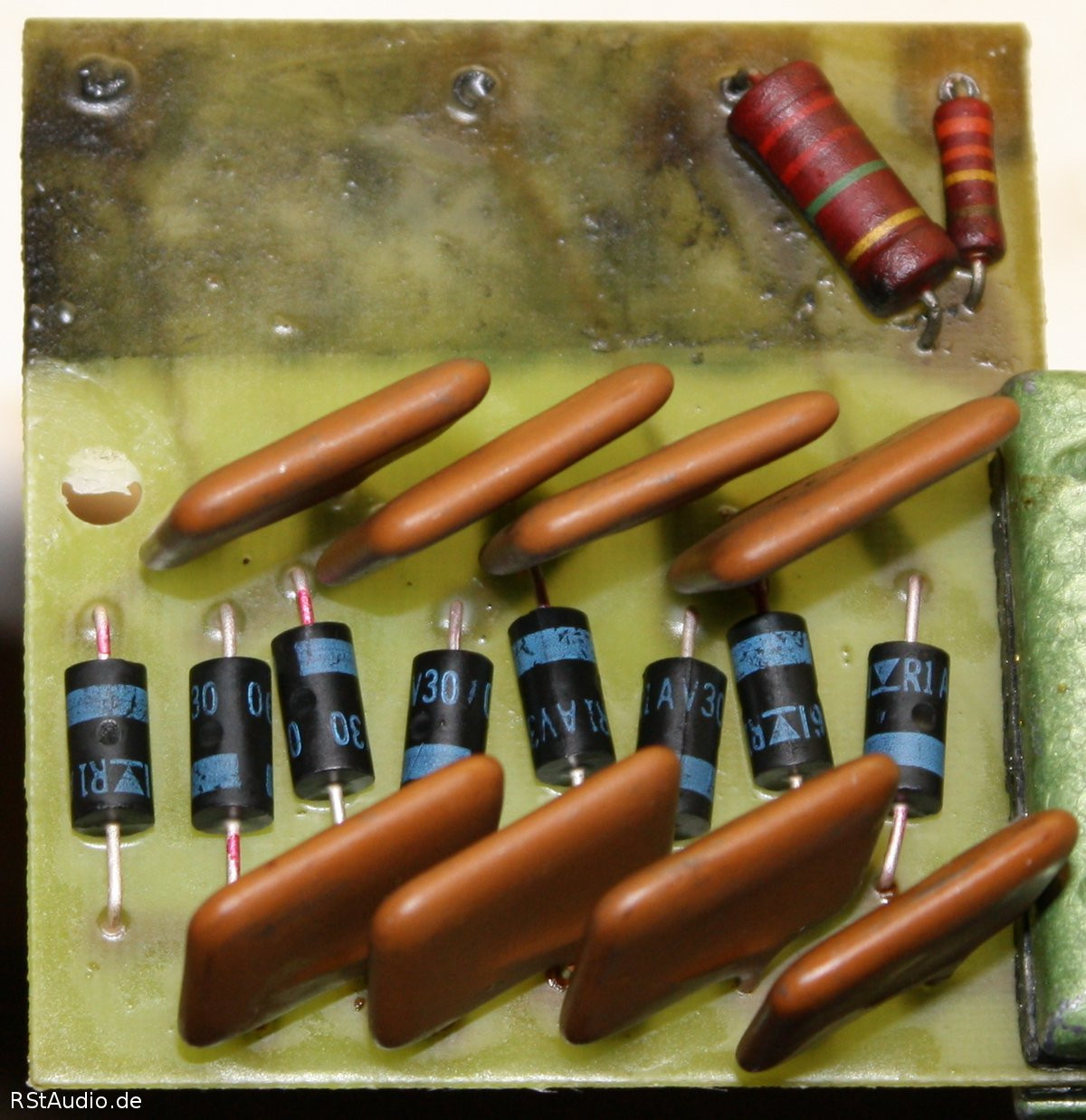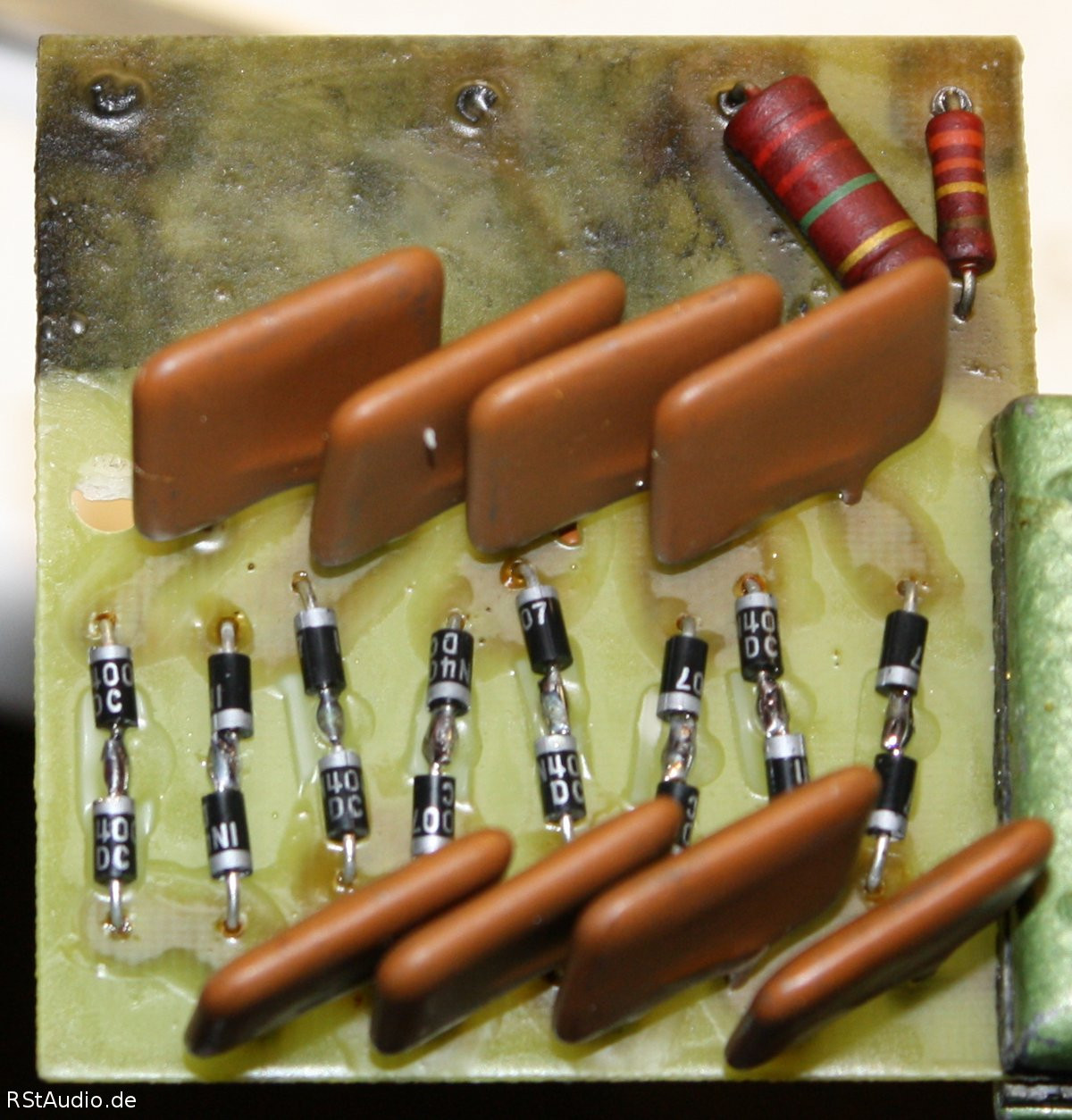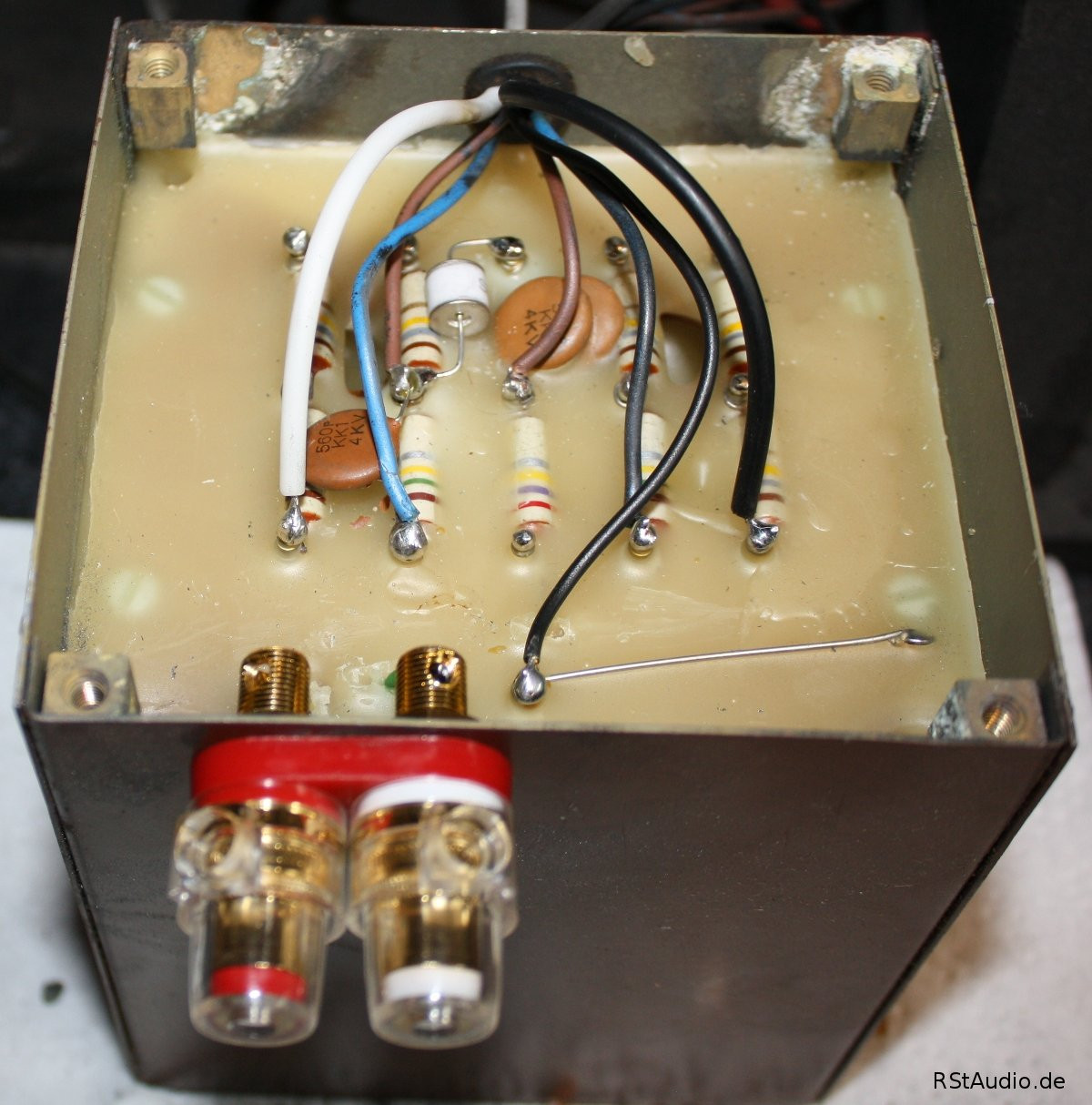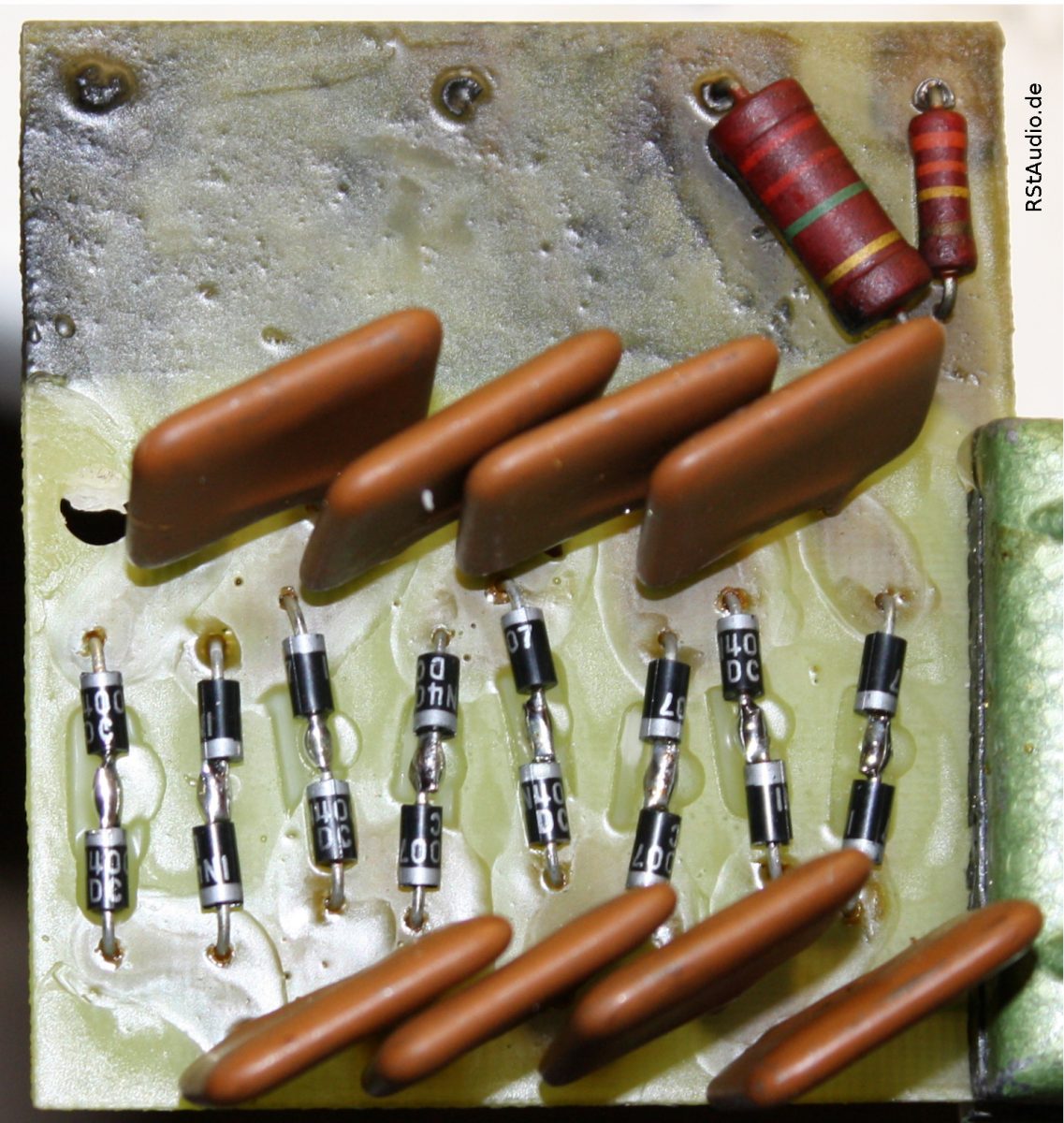
Table of Contents
Introduction
07-11-2021
After the Quad’s had been running trouble-free for over 30 years, I thought it was time to do some renovation work. The most important task was to replace the diodes in the high-voltage cascades, as these age over time and the nominal bias voltage is no longer applied to the foils (1.5kV tweeter and 6kV woofer). Furthermore, I replaced the rather modest original speaker terminals. As the last modification for the time being, I installed an overvoltage protection for the tweeter foil.
To access the high-voltage cascade and the input transformer, the rear grille must be removed. To do this, first switch off the mains voltage of the loudspeaker and wait at least 2 hours to be sure. Then you can remove the screws and have access to the rear structure of the electrostat.
!!! I switched off the speakers the day before !!!
This ensured that the foils were completely unloaded.
High-Voltage Cascade
07-11-2021
The high-voltage cascade is a four-stage Greinacher circuit with a total of 8 diodes. In this circuit, the reverse voltage of the diodes used must be greater than twice the peak voltage of the transformer secondary voltage. My loudspeakers are of the newer design and therefore a total of 8 high-voltage diodes are used in the cascades – in contrast to the older design with 2 diodes in series, i.e. 16 diodes in total.
To remove the entire power supply unit, first remove the earths of the front and rear grilles. Then the three cables for bass and treble bias as well as the ground can be unsoldered. Be careful because the wires are wrapped and you have to work very close to the dust protection foil. Once the cables are disconnected, the fixing screws can be loosened and the power supply removed.
In order to finally remove the high-voltage cascade, the two cables of the transformer’s secondary voltage must now be unsoldered from the input of the cascade. Then the two plastic screws can be removed and the cascade can be taken off. The last preparatory step before replacing the diodes is to melt the wax with which the cascade is encapsulated. This is done in a suitable vessel at approx. 150°C in the oven.
I replaced the single original diode of the high voltage cascade (left picture above) with 2 standard 1N4007 diodes connected in series (right picture above) and thus get a maximum reverse voltage of 2kV in each stage of the Greinacher circuit.
Now all steps are repeated in reverse order and the renewed cascade is reinstalled. Make sure that the screws for fixing the cascade are inserted into their holes before pouring the hot wax, as their thread is formed by the cooling wax.
I can only recommend this procedure to every owner of a Quad,
the loudspeaker is almost unrecognisable afterwards.
Audio Transformer
07-11-2021
Since I had already unscrewed the back panels of all my electrostats anyway, I took the opportunity to also make small changes in the audio area. All these years, I have been bothered by the very poor speaker terminals of the Quad, which I replaced in this project. Furthermore, I followed a suggestion on Sheldon’s World and installed a surge protector for the tweeter foil.
The picture above clearly shows the new speaker terminals. To fit them I first had to drill out and widen the existing holes. It was also necessary to adapt the rear grille to the larger sockets. You can also see the overvoltage protection at the transformer output to the tweeter foil. In contrast to the Zener diode chain used by Quad in later models, which is said to have a negative influence on the sound, the gas discharge system CP Clare CG3-1.5L used here with its extremely high resistance (GΩ) and very low capacitance (pF) is neutral in terms of sound – of course only as long as it does not ignite, but then the tweeter foil is also overdriven and there is a danger that it will strike.
